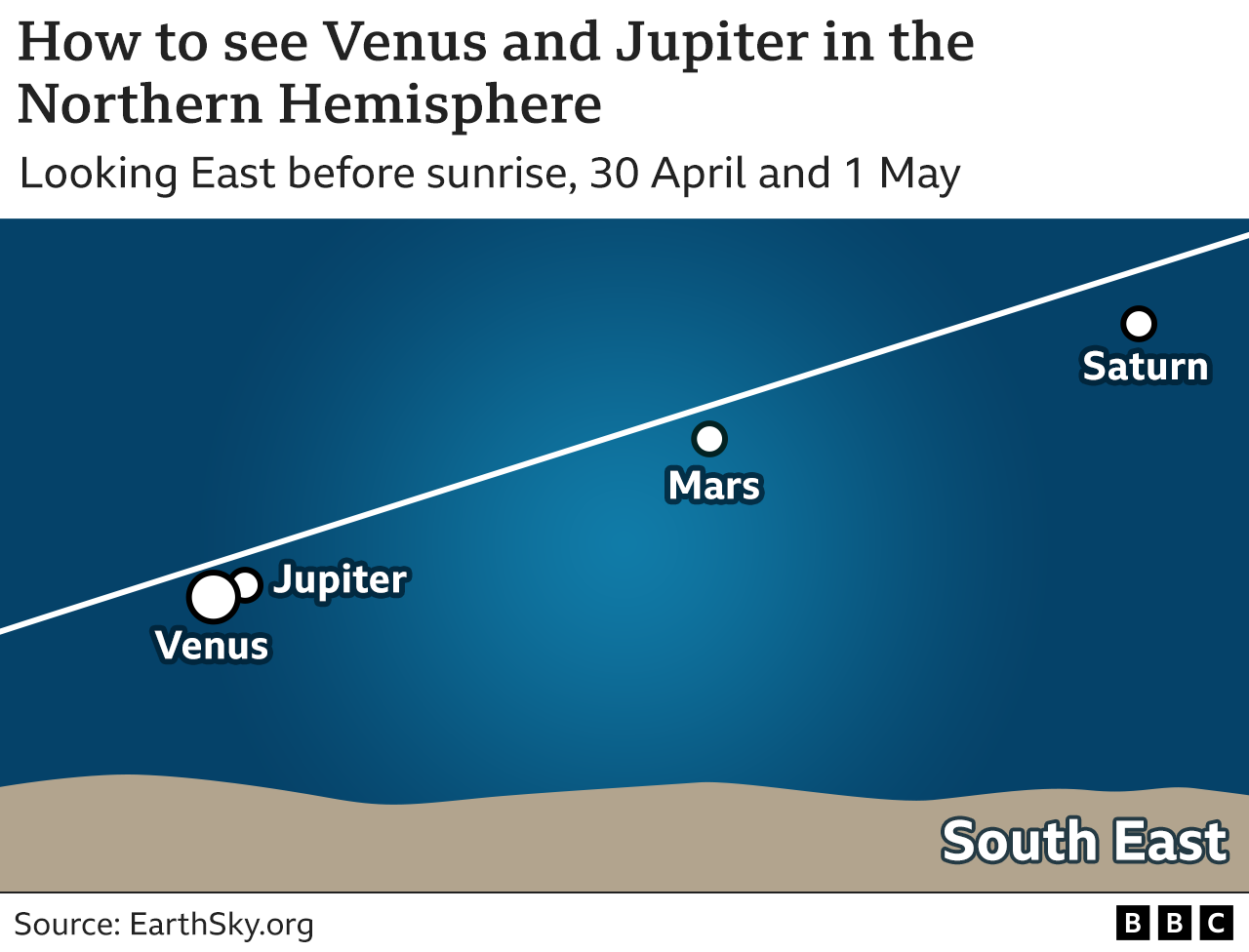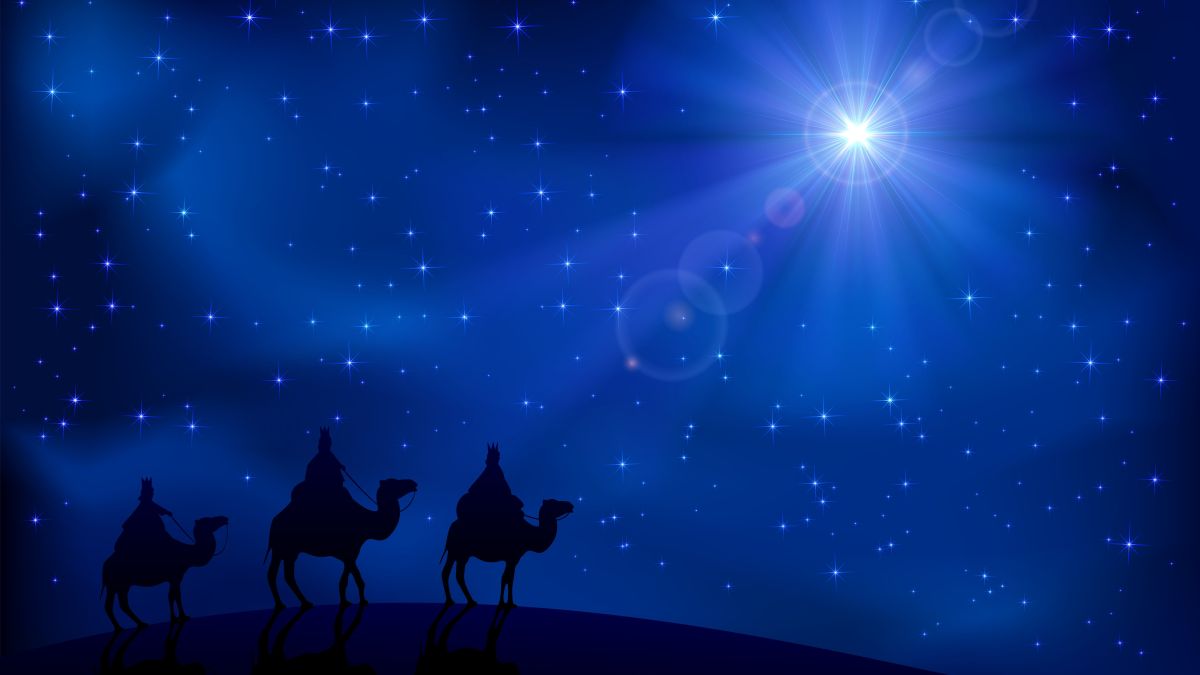THE SOUTHWORTH PLANETARIUM
70 Falmouth Street Portland, Maine 04103
(207) 780-4249 usm.maine.edu/planet
43.6667° N 70.2667° W
Altitude: 10 feet below sea level
Founded January 1970
2021-2022: CXVI
"Made from the best stuff off Earth."
THE DAILY ASTRONOMER
Monday, May 2, 2022
or Jupiter Nearly Touches Venus
Yes, we're performing that mind-boggling time trick again: sending Monday's DA on Saturday! If you missed the title, you might wonder why we bothered with another causality violation. Well, if you did miss it, and even after having read that last sentence still refuse to look at it, we'll explain that we're propelling the DA back in time because we want you to venture outside tomorrow morning around 5:00 a.m. to see Venus and Jupiter drawing tantalizingly close together!

Venus and Jupiter will appear to almost touch each other in the morning. This close contact is all illusory, of course, as these two worlds will be approximately 430 million miles apart. Image: BBC/Earth.Sky.org
It will be rather easy to distinguish between these planets as Venus will be six times brighter than its planetary companion. Considering that Jupiter, at magnitude -2.0, is brighter than Sirius, the night sky's brightest star, Venus truly dazzles! While you'll continue to see these planets in the pre-dawn eastern sky throughout the spring, they will gradually appear to separate. Tomorrow one will still be able to see them huddled together. And, if the conjunction of the sky's two brightest planets can't induce you to hop out of those hot sheets like someone who just had a nightmare about Hell, what would?
As a note of historical interest, many astronomers who've studied the Star of Bethlehem story speculate that this magi-guiding orb might not have been a star at all, but, instead, could have referred to a conjunction of Venus and Jupiter that occurred in 2 BCE.

Could the Star of Bethlehem have been a conjunction of Venus and Jupiter,
the same planets that currently appear close together in the pre-dawn sky?
Learn more about this intriguing theory by visiting the planetarium
on July 25th: our "Christmas in July" day. We'll be showing "Season
of Light" at 11 a.m and 1 p.m.
In June of that year, the two planets appeared to move so close together they might have been seen as a single star. In fact, on that occasion, Venus actually occulted (moved in front of Jupiter). However, that occultation would have only been visible in the Southern Hemisphere. Granted, the notion of the Star of Bethlehem having been Venus and Jupiter is merely speculation. It cannot be proven.
To subscribe or unsubscribe from the Daily Astronomer: